Introduction
Ice in flight is awful news. It destroys the flat flow of air, increasing haul while decreasing the aptitude of the airfoil to make lift. The actual heaviness of the ice on the aircraft is unimportant when compared to the airflow disturbance it causes. As power is additional to compensate for the extra drag and the nose is lifted to uphold altitude, the angle of assault is increased, allowing the bottom of the wings and fuselage to build up additional ice. Ice accumulates on each exposed frontal outside of the airplane not now on the wings, propeller, and windshield, but in addition on the antennas, vents, intakes, and cowlings. Furthermore, it constructs in flight where no heat or boots can arrive at it. It can reason antennas to shake so severely that they smash. In moderate to harsh conditions, a glow aircraft can turn into so iced up that sustained flight is impossible. The aircraft may stall at much senior speeds and inferior angles of assault than normal. It can roll or playing field uncontrollably and revival may be not possible.
De-icing fluids
A deicing fluid revival system for aircraft deicing equipment includes a storage space tank from which a deicing fluid/water deicing mixture is pumped from side to side a row warmer to a deicing fluid sharing and collection zone for request to the wings and fuselage of airplane. Expended deicing fluid is composed in a drainage scheme incorporated into a tangible or tarmac pad and caption for to a sump. Upon accumulation of a enough quantity, the diluted old deicing fluid is pumped to a mud tank. Solids and free water are alienated by settling and filtration processes in the mud tank. The filtered deicing fluid combination is heated from side to side sequential warmth exchangers and heading for to a regenerator. The deicing fluid combination is leaned by a thirst process in the regenerator in which the combination is heated and dense air is injected to tire out water from a stripping article. The lean deicing fluid flows over a run over weir into a collector. The heated and leaned deicing fluid mixture then is approved rear through the chronological heat exchangers, as a heat basis, and pumped back into the storage space tank for following use again (Helmreich, R. L, 2003).
Aviation Weather
Ice can also reason engine stoppage by also icing up the carburetor or, in the container of a fuel-injected locomotive, overcrowding the engine’s air foundation.
Kinds of Ice and Their Effects on Flight
Structural ice is the material that sticks to the outside of the aircraft. It is described as rime, obvious (sometimes called glaze), or varied.
- Rime ice has an uneven, milky white appearance, and usually follows the contours of the outside intimately. Much of it can be detached by melt systems or banned by anti-ice.
- Clear (or glaze) ice is sometimes obvious and smooth, but more often than not contains a number of air pockets that consequence in a lumpy transparent appearance. The better the accretion, the less shiny finish ice conforms to the form of the wing; the shape is frequently characterized by the attendance of higher and lower “horns.” Clear ice is denser, harder, and from time to time more see-through than rime ice, and is usually hard to smash.
- Mixed ice is a mixture of rime and clear ice. Ice can deform the flow of air in excess of the wing, moving back the wing’s utmost lift, reducing the angle of assault for utmost lift, adversely affecting airplane treatment qualities, and considerably growing drag.
Wind tunnel and flight tests have shown that ice, snow, and frost accumulations (on the leading edge or higher outside of the wing) no thicker or rougher than a part of uncouth sandpaper can decrease lift by 30 percent and add to drag up to 40 percent. Larger accretions can decrease lift even more and can add to drag by 80 percent or additional.
Even airplane equipped for flight into icing conditions are considerably exaggerated by ice accumulation on the defenseless areas. A NASA study (NASA TM83564) showed that shut to 30 percent of the sum drag associated with an ice meet remained after all the secluded surfaces was empty. Nonprotected surfaces may comprise antennas, flap hinges, manage horns, fuselage forward area, windshield wipers, wing struts, fixed landing device etc (Schermerhorn, J. R., Hunt, J. G., & Osborn, R. N, 2003).
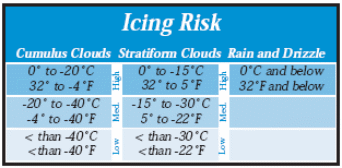
Some unsuspecting pilots have, unfortunately, been wedged by surprise with a serious coating of ice and no diagram of action. Many pilots get a climate briefing and contain small or no idea how to decide where icing may happen. However, pilots can learn sufficient basic meteorology to appreciate where ice will almost certainly be waiting after they obtain their climate briefing. The direct can then devise an ice-avoidance flight diagram before increasingly send-off the earth.

Ice can form on airplane surfaces at 0 degrees Celsius (32 degrees Fahrenheit) or colder when fluid water is there. Even the best plans have a number of variables. Although it is moderately easy to forecast where the great areas of icing potential live, the accurate forecast of exact icing areas and altitudes pretenses more of a quandary. Mountains, bodies of water, storm, hotness, dampness, and impressive heaviness all play everchanging roles in weather-making.
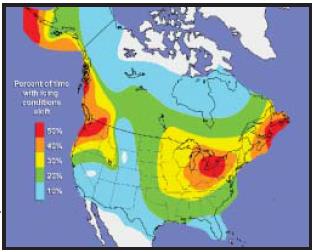
According to the expert analysis all clouds are not similar. There are dry vapors and wet clouds. Dry clouds have comparatively little moisture and, as a consequence, the possible for aircraft icing is low. North Dakota, since of its very cold winters, is frequently home to dry clouds. However, chill in the Appalachians in Pennsylvania and New York frequently brings a tremendous quantity of moisture by means of the chilly air and plenty of wet vapors that, when temperatures are cold or below, are laden with ice. The Great Lakes are a huge moisture basis. The source of a chilly air mass is a key to how a great deal supercool irrigates the clouds determination take. If the prevailing winds take clouds over water, they determination probably be wet. The chart on top of shows some of the areas of elevated icing potential. Heavy icing circumstances may from time to time occur in the low-risk areas exposed on the chart on top of.
Fronts and low-pressure areas are the main ice producers, but remote air mass unsteadiness with plenty of damp can generate enough ice in vapors to make light airplane flight not recommended. Freezing rain and light rain is the ultimate opponent that can radically roughen large outside areas or deform airfoil shapes and create flight tremendously dangerous or impossible in a substance of a few minutes. Freezing precipitation occurs when rainfall from warmer air aloft falls from side to side a hotness inversion into below-freezing air under. The better droplets may crash and freeze at the back the area secluded by outside deicers (von Thaden, T., Wiegmann, D. A., & Shappell, S. A, 2004).
Freezing light rain is usually formed when droplets crash and join together with other droplets. As the droplets produce in size, they start to fall as drizzle. Both cold rain and light rain can fall underneath a cloud floor to the earth and cause ice to form on airplane surfaces throughout earth operations, takeoff, and hallway if the surface temperature is underneath chilly (Porter J. Perkins and William J. Rieke, running scared Icing. Ohio, 1999).
Along a freezing face, the cold air plows beneath the warm air, exciting it faster and resulting in the configuration of moist cumulus. Along a warm front, the heater air tends to slide over the colder air, forming stratus clouds favorable to icing. As you move toward the front,
The clouds build rapidly and the obvious air between layers quickly disappears.
Freezing rain and cold drizzle, including freezing light rain aloft, are from time to time found in the surrounding area of fronts. If you choose to soar through the face, be certain that it does not enclose freezing rain or cold drizzle and other hazardous conditions such as entrenched thunderstorms. You should diagram on flying the shortest direction from side to side the face instead of airborne the length of the front.
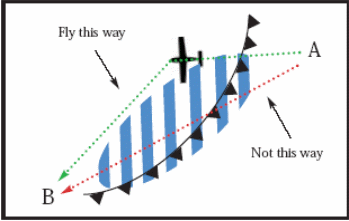
Structural Ice
How quickly a outside collects ice depends in fraction on its shape. Thin, contemporary wings will be additional critical by means of ice on them than thick, older division sections. The tail surfaces of an aircraft will normally ice up a great deal faster than the division. If the tail stalls owing to ice and the airflow disturbance it causes, recovery is improbable at low altitudes. Several air transporter aircraft have been lost owing to tail stalls. It also happens to glow airplane but more often than not isn’t well recognized (Wiegmann, D. A., Zhang, H., von Thaden, T., & Mitchell, A, 2002).
Since tail stall is fewer familiar to a lot of pilots, it is emphasized in this consultant but wing stall is the a great deal more ordinary threat, and it is very significant to properly distinguish flanked by the two, because the required actions are approximately conflicting.
Wing Stall
If we analyzed then we come to know that the wing will normally stall at a lower point of view of attack, and thus a senior airspeed, when contaminated with ice. Even little amounts of ice will contain a result, and if the ice is rough, it can be a great effect. Thus an add to in approach pace is advisable if ice leftovers on the wings. How a great deal of an add to depends on both the airplane type and quantity of ice. Consult your AFM or POH. Stall individuality of an airplane with ice-contaminated wings will be tainted, and serious roll manage troubles are not unusual. The ice accumulation may be asymmetric flanked by the two wings. Also, the external part of a division, which is normally thinner and thus a improved collector of ice, may booth first quite than previous.
Components in the Aircraft
Aircraft accidents carry on occurring due to the configuration of ice on aircraft in journey. The primary reason of these accidents is the result of ice on aircraft manages. Icing accidents can be banned in two different ways: 1) Icing circumstances can be avoided, or 2) the aircraft structure can be intended and operated in an ice tolerant way. For all aircraft, ice avoidance is a attractive goal for greater than before safety. However, for profitable aircraft, where income and schedules must be maintained, ice broadmindedness will carry on to be the preferred technique for all but the majority severe icing conditions. Our move toward is to conduct research to get better the safety of operations in icing circumstances (ice broadmindedness) by mounting the Smart Icing Systems idea through an interdisciplinary systems come near.
Successful ice broadminded concepts were primary applied to aircraft in the 1930’s with the fixing of pneumatic boots on aircraft wings. Because that time, ice broadminded aircraft icing research has listening carefully on sensing ice, enhanced ice removal methods, ice physics and other very exact research areas. Icing investigate has not listening carefully on security in terms of an in general systems view of the difficulty. Particularly lacking is the request of flight mechanics, aircraft manage and human issues to the icing safety difficulty. Recent go forwards in digital manage; cockpit instrumentation and computer-based mechanization make it likely to expand new approaches to ice broadminded aircraft design and process
The important result of ice on an aircraft is its power on the performance, constancy and control of the aircraft classification. Safety will be achieved in an ice broadminded aircraft if the pilot/aircraft structure can continue to uphold the desired voyage path, with a satisfactory safety edge, regardless of impressive icing conditions. One situation for a systems answer to ice broadminded aircraft security is:
- Sense the attendance of ice accretion from side to side its effect on deliberate aircraft performance, constancy and control. Sense ice accumulation and ice protection structure presentation. Provide the appropriate in order to the journey team.
- Automatically make active and manage the ice defense systems, and provide the direct with feedback on the structure status and performance of both the aircraft and the ice defense system.
- Modify the aircraft flight cover by use of the flight manage system to keep away from circumstances where flight could potentially be unmanageable. Notify the journey team of this achievement and its implications for the journey wrapper (Nader, R. & Smith, W. J, 2000).
- Adapt the aircraft manage laws to uphold clean-aircraft-like flying behavior to facilitate the aircraft to be securely flown within the abridged flight wrapper. Notify the journey team of this exploit and uphold good pilot-automation harmonization.
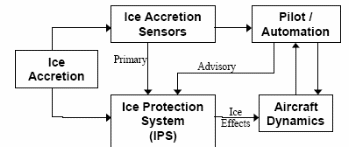
Effects of Icing on Roll Control
Ice on the wings onward of the ailerons can have an effect on roll manage. Wings on GA aircraft are intended so that stall starts near the origin of the wing and development outward, so the booth does not get in the way with roll manage of the ailerons (Chute, R. D. & Wiener, E. L, 2002). However, the tips are more frequently than not thinner than the relax of the wing, so they are the fraction of the division that most professionally collects ice. This can guide to a partial booth of the wings at the tips, which can have an effect on the ailerons and therefore roll manage.
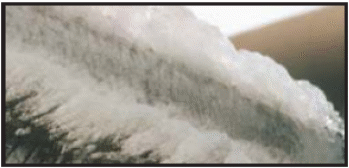
What Is ina Tail Stall? (Perkins and Reike, In-Flight Icg)
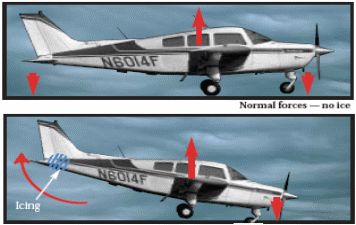
The horizontal stabilizer balances the tendency of the nose to pitch down by generating downward lift on the tail of the aircraft. When the tail stalls, this downward force is lessened or detached, and the nose of the aircraft can severely pitch down. Since the tail has a lesser leading edge radius and chord distance end to end than the wings, it can bring jointly proportionately two to three period more ice than the wings and, over and over again, the ice buildup is not seen by the direct.
Case Study 1
The airplane was in a holding prototype and was downward to a newly assigned height of 8,000 feet when it knowledgeable an uncommented roll jaunt and crashed throughout a fast descent. The defeat of control was attributed to a unexpected and unforeseen aileron hinge moment turnaround that occur after a ridge of ice accreted beyond the thaw boots. The manufacturer botched to disseminate ample warnings and leadership to operators concerning the unfavorable characteristics of, and techniques to get well from, ice-induced aileron pivot instant reversal proceedings; and unsuccessful to develop extra aircraft modifications, which led in a straight line to this mishap. The DGAC failed to need the manufacturer to take extra corrective actions, such as drama additional icing tests, issuing more exact warnings regarding the aileron hinge instant reversal phenomenon, rising additional aircraft modifications, and as long as specific leadership on the revival from a hinge moment turnaround, which led in a straight line to this accident. The aptitude of the FAA to monitor, on a real-time foundation, the sustained airworthiness of the ATR airplanes was in a weak position by the poorly distinct lines of message, the insufficient means for the FAA to get back pertinent in order, and the DGAC’s failure to give the FAA with dangerous airworthiness in order., since of the DGAC’s apparent belief that the in order was not required to be give under the terms of the Bilateral Airworthiness.
No doubt, the loss of control, attributed to a unexpected and unforeseen aileron hinge instant reversal that occurred following a ridge of ice accreted beyond the melt boots while the aircraft was in a investment pattern throughout which it sporadically encountered great cooled blur and drizzle/precipitation drops, the dimension and water happy of which exceeded persons explained in the icing guarantee envelope. The airplane was at risk to this loss of control, and the team was unable to get well Contributing to the mishap were: 1) the French Directorate Universal for Civil Aviation’s (DGAC’s) inadequate mistake of the ATR 42 and 72, and its breakdown to get the necessary remedial action to ensure sustained airworthiness in icing circumstances; and 2) the DGAC’s failure to supply the FAA with opportune airworthiness in order urbanized from previous ATR incidents and accidents in icing conditions,3) the Federal Aviation Administration’s (FAA’s) breakdown to ensure that airplane icing certification supplies, operational supplies for flight into icing circumstances, and FAA in print aircraft icing information sufficiently accounted for the hazards that can result as of flight in cold rain, 4) the FAA’s inadequate mistake of the ATR 42 and 72 to make sure sustained airworthiness in icing conditions; and 5) ATR’s insufficient response to the sustained occurrence of ATR 42 icing/roll upsets which, in combination with information learned concerning aileron manage difficulties during the guarantee and expansion of the ATR 42 and 72, should have encouraged extra investigate, and the creation of efficient airplane trip manuals, flightcrew operating manuals and preparation programs related to process of the ATR 42 and 72 in such icing circumstances.
Container Study 2
Another accident case of 1982, Air Florida Flight 90, a Boeing 737-222 (N62AF) was a planned flight to Fort Lauderdale, Florida, from Washington National Airfield, Washington, D.C. There were 74 passengers, counting 3 infants, and 5 crewmembers on plank. The flight’s scheduled exit time was delayed about 1 hour 45 minutes owing to a moderate to serious snowstorm, which necessitated the provisional closing of the airfield.
Following impersonation from landing strip 36, which was complete with snowstorm and/or ice adhering to the airplane, the aircraft not operational at 1601 e.s.t. into the fence wall of the northbound distance of the 14th Street Bridge, which connects the Region of Columbia with Arlington County, Virginia, and thrusts into the ice-covered Potomac River. It came to relax on the west surface of the bridge 0.75 nmi from the going away end of runway 36. Four passenger and one crewmember stay alive the crash.
When the airplane hit the bridge, it struck seven occupied means of transportation and then tore away a section of the viaduct railing. Four people in the vehicles were killed; four were upset.
The National Transportation Safety Board decided that the likely cause of this mishap was the flight crew’s breakdown to use engine anti-ice throughout ground operation and impersonation, their choice to take off with snowstorm/ice on the airfoil outsided of the airplane, and the captain’s failure to refuse the takeoff during the early phase when his attention was called to irregular engine tool readings. Contributing to the mishap were the prolonged earth delay flanked by deicing and the receiving of ATC takeoff clearance all through which the aircraft was exposed to repeated precipitation, the recognized inherent pitchup individuality of the B-737 airplane when the most important edge is contaminated with still minute amounts of snow or frost, and the limited knowledge of the flightcrew in jet convey winter process.
Conclusion
Most icing accidents happen in the approach and hallway phases of journey. If on top of ice-laden clouds, ask for ATC’s permission to wait on top as long as probable previous to having to descend. When transport ice do not lower the flaps. The airflow alters resulting as of lowering the flaps may reason a tail with ice accumulation to stall. Remember the stall pace is greater than before when carrying a weight of ice, and the booth margin is abridged when you sluggish to land. If the airplane is refrigerated up, carry extra authority and speed on concluding approach—at smallest amount 10 to.
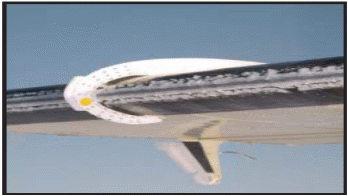
This research focused on this truth that if you have a choice of airports, uses the best ever runway likely, even if it means renting a car to get house. A 3,000-foot strip is not the put to go when carrying ice, still though it might be two times the runway you usually use. Since of greater than before airspeed and a no-flap configuration, the landing coldness will be a great deal longer than normal. If there is ice uphill, frequently there might be ice on the landing strip as well, which very much increases stopping coldness.

If you are unfortunate sufficient to have an unintentional icing encounter in an airplane with no windshield anti-ice, twist the defroster on far above the ground to possibly keep a piece of the windshield obvious.
Turn off the small house heat if that will give more warmth to the windshield. If the windshield is poorly iced, open the side casement and attempt to rub away a little hole by an automotive windshield ice scraper, praise card, or other appropriate thing. You may injure the windshield, but the option could be a great deal worse. Do not lose manage of the aircraft at what time removing ice beginning the windshield.
Induction System Ice
Not all airplane ice is structural; introduction icing is the cause of a lot of accidents. There are two kinds of induction scheme icing: carburetor icing, which affects engines with carburetors, and air eating blockage, which affects together carbureted and fuelinjected engines. Introduction icing accidents pinnacle the charts as the figure one grounds of icing accidents, comprising a enormous 52 percent.
We have approach a long method but we still have a extended road in front of us. For the majority part, the Lorenzo’s and other business scavengers have been eradicated. Newer thoughts in organization have been active in adapting the state of mind that it is likely for an organization to achieve an ideal balance of income and safety. Profit and safety be supposed to go hand over in hand quite than visions as an organizational quandary. In the end, a safer airline will be a stronger and more gainful one contrast to an airline whose make is marred by disaster and worker bitterness.
References
Helmreich, R. L. (2003). Applying the threat and error management model: The Dryden accident. 2004. Web.
National Transportation Safety Board. (2004). Aircraft accident report # AAR-82/08. [Electronic version]. 2004. Web.
Schermerhorn, J. R., Hunt, J. G., & Osborn, R. N. (2003). Organizational behavior (8th ed.). Hoboken, NJ: Wiley and Sons.
von Thaden, T., Wiegmann, D. A., & Shappell, S. A. (2004). Measuring organizational factors in airline safety. Technical Report AHFD-03-11/FAA-03-3. [Electronic version]. 2004. Web.
Wiegmann, D. A., Zhang, H., von Thaden, T., & Mitchell, A. (2002). A synthesis of safety culture and safety climate research. Technical Report ARL-02-3/FAA-02-2 [Electronic version]. 2004. Web.
Chute, R. D. & Wiener, E. L. ‘Cockpit/cabin communication: I. A tale of two cultures.’ 1996. Web.
Federal Aviation Administration. (2001) Crew resource management training (AFS-210, AC no. 120-51B). Washington, D. C.
Nader, R. & Smith, W. J. (2000). Collision course: The truth about airline safety. PA: TAB Books.
FAA News. ‘Atlantic coast airlines first to use FAA crew performance program.’ 1996. Web.
Helmreich, R. L. ‘The evolution of crew resource management.’ 1996. Web.
Chute, R. D. & Wiener, E. L. (2002). Cockpit-cabin communicaiton: II. shall we tell the pilot? The International Journal of Aviaiton Phychology, 6 (3), 211-229.